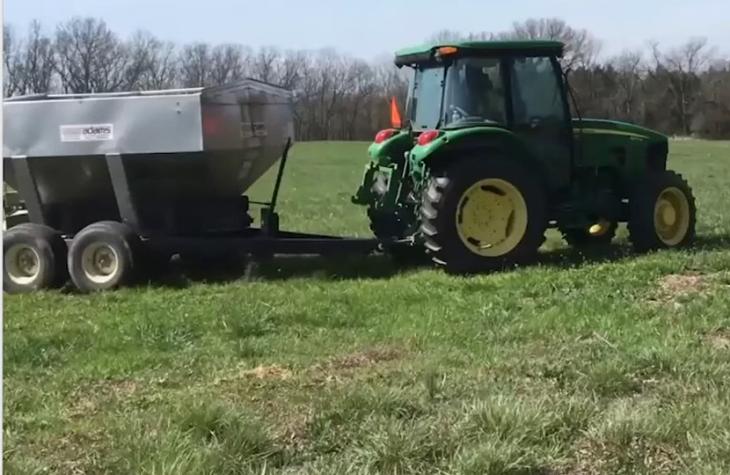MONTGOMERY CITY, Mo. – Start stockpiling tall fescue in mid-August for healthier, more profitable cattle, says University of Missouri Extension field specialist in agronomy Rusty Lee.
Stockpiling fescue extends the grazing season and reduces the need to feed hay. “Winter feed costs are the cattle producer’s biggest single expense,” says Lee. The best way to reduce that expense is to let cattle graze longer and feed hay for a shorter time.
Fescue is Missouri’s No. 1 forage. Producers favor it because of its persistence, resistance to insects and disease, and long growing season. Once growth slows in mid-October, feed value is maintained due to its waxy cuticles, which protect the leaves from weathering.
Stockpiling focuses on managing new growth of fescue plants, Lee says. Its benefits include reduced labor, lower costs and less time. Compared to other stockpiled forages, tall fescue maintains more high crude protein and energy. Regrowth also is high in carbohydrates and least toxic in late winter.
Lee’s recipe for successful stockpiling includes starting with 3-6 inches of leaf in pastures in August. Producers should remove cattle from pastures in mid-August and then topdress 40-60 pounds of nitrogen per acre.
Keep cattle off pastures to allow grass to grow. The longer plants grow, the better, says Lee.
For high-density stands, every inch of fescue is equivalent to 300-400 pounds of forage, he says. Even low-density stands yield 150-250 pounds per inch of growth per acre.
Strive for 1 acre of properly stockpiled tall fescue per cow, says Lee. This should feed a 1,200-pound cow for 60 days or more.
Stop grazing fescue while new growth accumulates until growth stops in late November or early December. Add supplemental feed as needed since the crude protein in stockpiled tall fescue decreases as winter progresses.
Resume grazing in December and practice strip grazing for highest utilization. Use a temporary high-tensile electric fence and step-in posts to portion off paddocks. Move fence-broke cows to a fresh paddock every one to three days to stretch forage and for best quality. Begin with the paddock closest to the water supply.
It takes about 30 minutes a day to move the fence, whether you have 20 or 100 cows, Lee says. It is time well spent because feeding costs drop from $1.56 to 50 cents per cow per day.
Move the wire to expose two to three days’ worth of grazing, he says. Figure daily herd requirement, and factor in 70% utilization if moving every two days to calculate size strip required.
If you fertilize earlier than mid-August, forage quality is lower and yields are not significantly higher. If you delay stockpiling, you will get higher-quality forage but lower yields, says Lee.
Stockpiling also offers an additional benefit: more even manure distribution throughout the pasture rather than clusters around feed bunks or rings.
Lee says now is the time to order seed for frost-seeding since seed is sometimes in short supply. In prior years, agronomists recommended frost-seeding in February, but Lee says changes in weather and climate now indicate that January is better.
Learn more in the MU Integrated Pest Management YouTube video “Fall Forage Stockpiling.”
